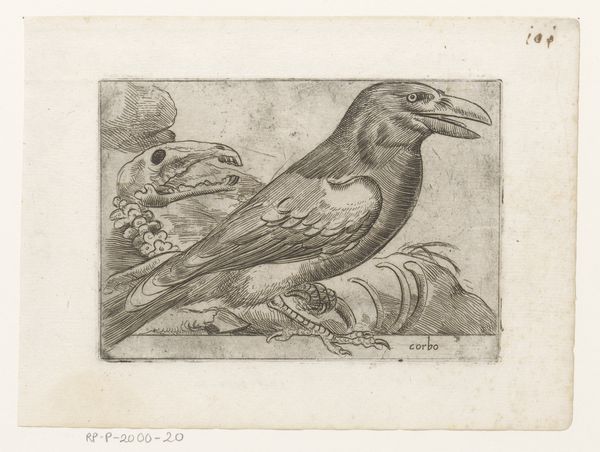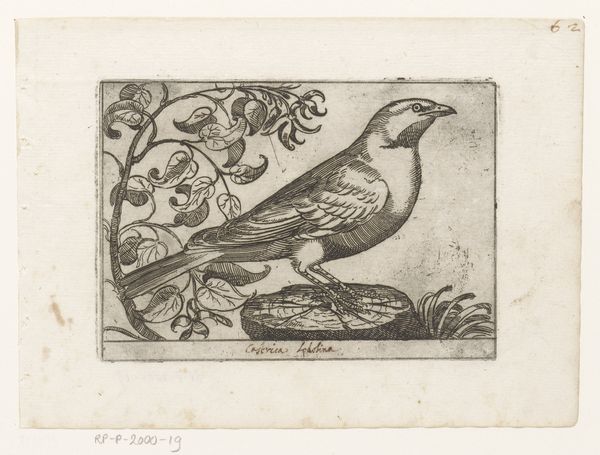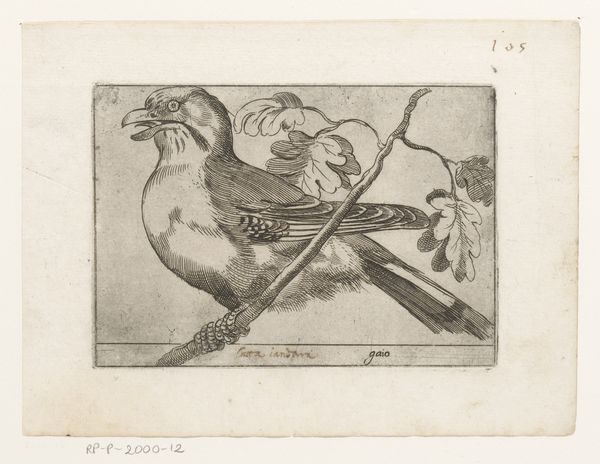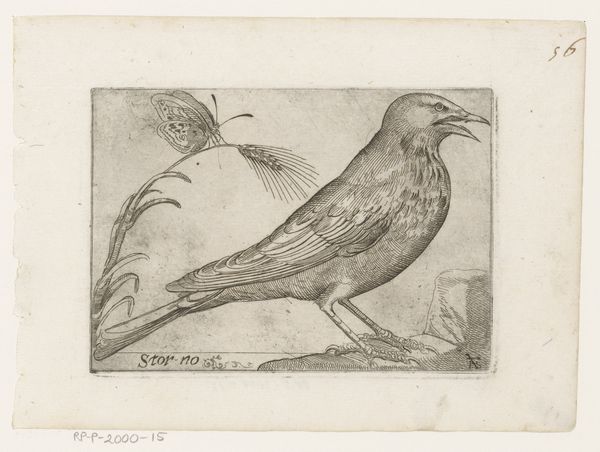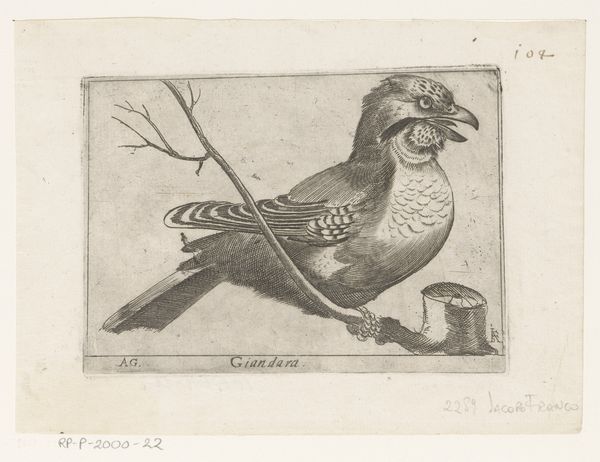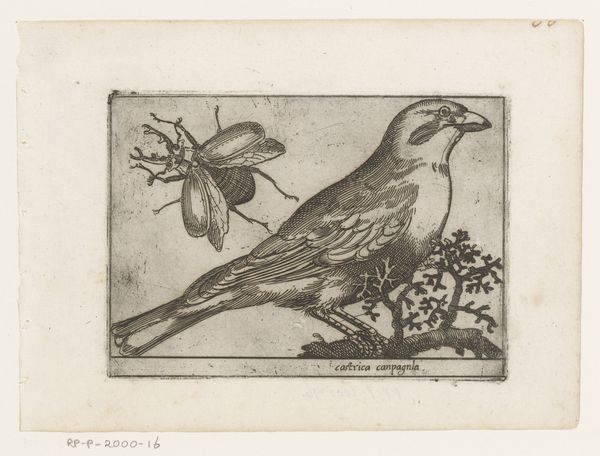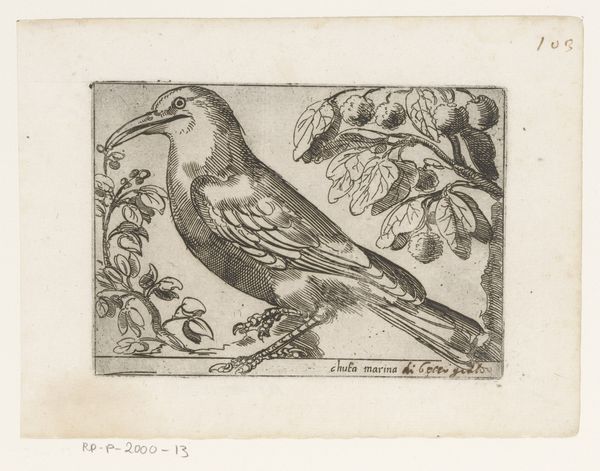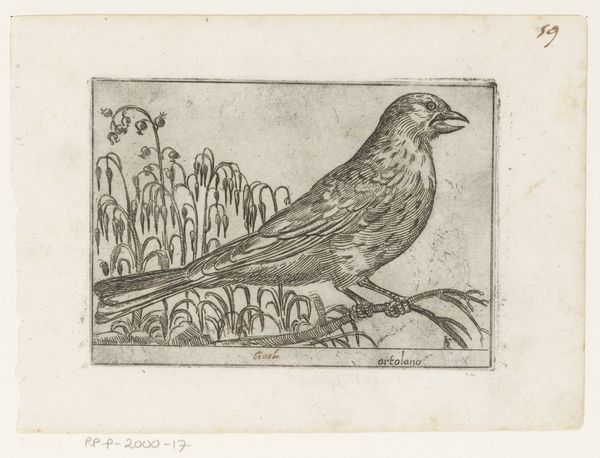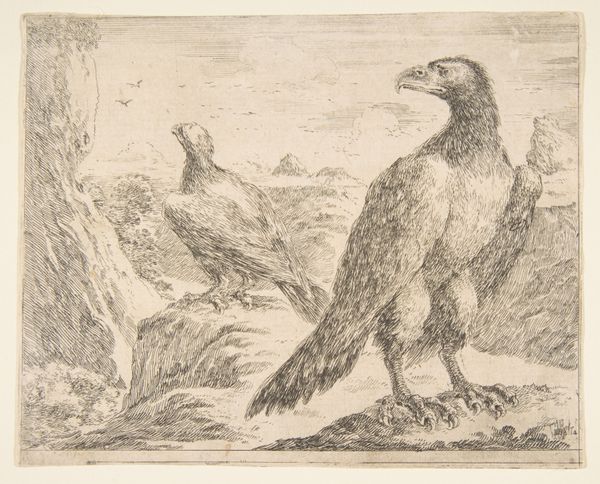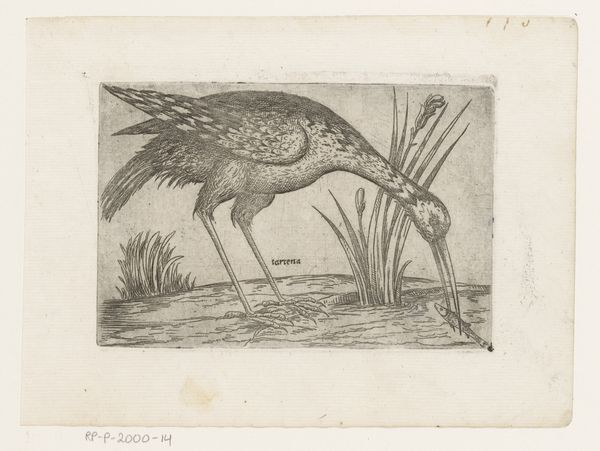
print, engraving
# print
#
old engraving style
#
figuration
#
northern-renaissance
#
engraving
Dimensions: height 102 mm, width 140 mm
Copyright: Rijks Museum: Open Domain
This print of a corn crake, or ‘Kwartelkoning’ in Dutch, was made in the early 17th century by Jacques de Fornazeris. It is an etching, a printmaking technique that involves biting lines into a metal plate with acid, which are then inked and printed. Look closely, and you can see how the network of etched lines defines the bird’s form, giving it volume and texture. Note, for instance, the fine hatching suggesting the soft plumage of its feathers. The etcher’s skill lies in their ability to render the natural world through controlled, repeatable, linear marks. This print belongs to a tradition of naturalistic illustration, documenting the flora and fauna of the period. It's worth considering that printmaking in the 17th century was a complex interplay of artistic skill and industrial-like production. Such prints were made to be consumed, collected, and studied, reflecting a growing interest in the natural world, and new modes of knowledge dissemination. Ultimately, the significance of this work lies not only in its subject, but also in its method, and in what that can tell us about the social context in which it was made.
Comments
No comments
Be the first to comment and join the conversation on the ultimate creative platform.
